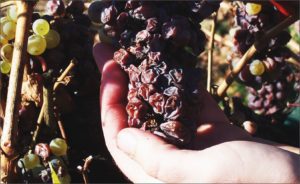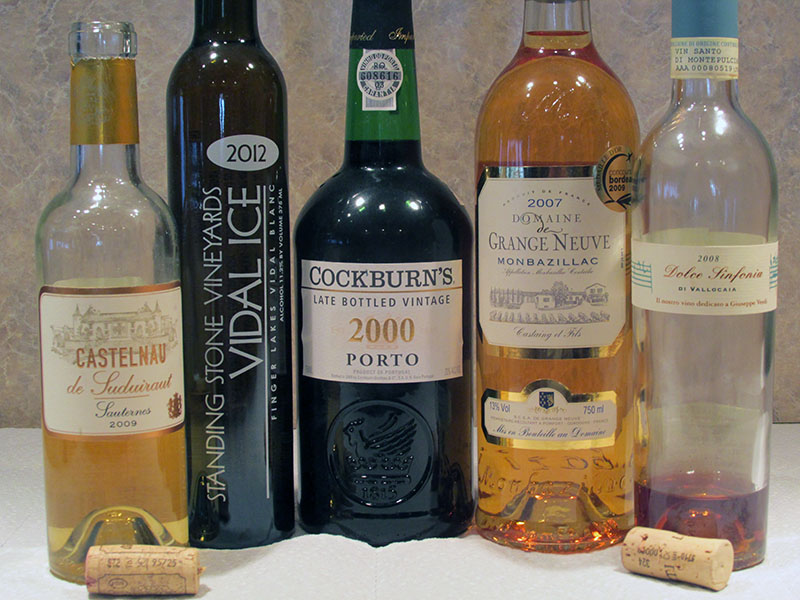By Bob Lipinski
“A glass of wine is a great refreshment after a hard day’s work.” (Ludwig Van Beethoven, 1770–1827, German composer)
Sweet wines are meant for after-dinner consumption…right? Well, yes, and no. There are some sweet and some not so, that are served before and even during dinner. In France a sweet Sauternes wine is occasionally served with the main course and in Italy a chilled glass of sparkling Asti is perfect with light and mild appetizers.
Sweet wines can loosely be defined as wines having noticeable sugar, which is detected in the front of the mouth or tip of the tongue. Sweet wines can be relatively light in body compared to others that are fuller in the mouth with a syrupy rich, fat, and lush taste with an almost oily texture. Although there is no legal definition for a sweet wine it’s generally accepted that wines with over 2 percent sugar are considered sweet.
Sweet wines are made in every country and there many methods used to make these delicious, luscious wines. The most common methods are:
1) Dried Grapes: Partially drying grapes after harvest; shriveling berries prior to fermentation. The drying can be in the sun on straw mats or in special rooms, which control humidity. Most European cultures maintain some tradition of partially drying grapes. Examples are Amarone della Valpolicella, Vin Santo, Sforzato di Valtellina, Valpolicella Ripasso.

Dried Grapes
2) Late-Harvested Grapes: Grapes left on the vine so natural dehydration concentrates sugars. Examples are Spätlese, Auslese, wines labeled “late-harvest.”
3) Botrytis-Affected Grapes: In humid climates, grapes destined for sweet wines may be attacked by a beneficial mold, Botrytis cinerea, which dehydrates the grape and concentrates sugars. Examples are Barsac, Sauternes, Beerenauslese, Tokaji, Bonnezeaux, Cadillac, Monbazillac, Quarts de Chaume.
4) Frozen Grapes: Grapes are literally frozen, on or off the vine to decrease water content and increase sugar. Examples are Eiswein and Ice Wine.
5) Stopping Fermentation: Adding brandy to the grape juice, fermenting wine or post-fermentation. Examples are Port, Sherry, Madeira, Marsala, Banyuls, and Muscat de Beaumes-de-Venise.
Foods that pair with sweet wines are almonds, pistachio, cannoli, cheesecake, chocolate, custards, dried fruits, panettone, pastries, pies, puddings, sorbet, tiramisù, and zabaglione, to name but a few. You can even pour sweet wine over ice-cream.
Sweet desserts need sweet wines, so choose a dessert that is not sweeter than the wine or the wine will taste dry, thin, bitter, and less flavorful. Serve sweet wines cold but not overchilled to get the most flavor from them.
Bob Lipinski is the author of 10 books, including “101: Everything You Need to Know About Whiskey” and “Italian Wine & Cheese Made Simple” (available on Amazon.com). He consults and conducts training seminars on Wine, Spirits, and Food and is available for speaking engagements. He can be reached at www.boblipinski.com OR bkjm@hotmail.com.


 Bob Lipinski, author of 10 books; writes, consults, and conducts training seminars on Wine, Spirits, and Food and is available for speaking engagements.
Bob Lipinski, author of 10 books; writes, consults, and conducts training seminars on Wine, Spirits, and Food and is available for speaking engagements.
Recent Comments